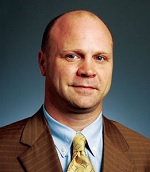Charles River Laboratories ($CRL) has unveiled a new technology it says can better test for impurities by combining two common methods into a single product, making for a flexible solution.
The CRO's new technology is PTS-Micro, a system designed for speedy bioburden testing, in which researchers scan for microorganisms in a sample to prevent contamination and ensure raw materials and finished products are up to snuff.
According to Charles River, current bioburden platforms are either growth-based or direct, but the CRO's technology can switch between the two modalities to meet the specific needs of a given product. And PTS-Micro uses cytometry to rapidly detect microbes on multiple samples at once, the company said, allowing clients to verify quality and move on with the development process.
 |
| Charles River's Foster Jordan |
"The PTS-Micro system provides customers who have critical bioburden samples a platform to obtain results sooner and therefore, make go/no-go decisions earlier," Charles River Senior Vice President Foster Jordan said in a statement. "Its introduction further underscores our commitment in providing rapid, accurate and reliable results for our clients in the biopharmaceutical, medical device and other regulated industries."
The new offering fits alongside Charles River's suite of quality control offerings, including its Endosafe endotoxin testing technology and Accugenix microbial identification system.
Charles River is continuing to expand its offerings beyond its banner animal model business, in March paying $179 million for two CROs that specialize in medicinal chemistry, target discovery and complex in vitro biology. The move was designed to expand Charles River's expertise in early-stage services, augmenting its capabilities in preclinical testing with integrated drug discovery know-how.
Last quarter, the CRO grew revenue by nearly 17% to $341.2 million. Charles River's Research Models and Services business jumped 2.6% to $133.1 million, while its Discovery and Safety Assessment unit leapt 32.7% to $142.6 million, and its smaller manufacturing operation jumped 17.5% to $65.4 million.
- read the statement